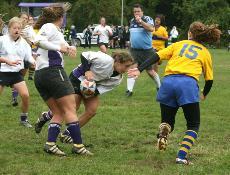A sense of security has returned to WCU after an increase in crime at the beginning of the semester, yet safety is as important as ever, namely emergency measures such as the Code Blue Emergency Phones stationed around campus, which are not all completely functional.The system is tested randomly once a month by a public safety officer, yet many of the blue lights atop of the emergency stations do not appear to be working after dark. While the emergency phones may function properly, the blue light is a major deterrent to possible incidents around the stations.
The National Crime Prevention Council conducted studies showing that lighting can reduce crime rates by 20 percent. Crime studies show that lighting allows for surveillance, deterrence, detection, liability reduction, and fear reduction. The blue light is not on at stations located at the Sharpless Street garage, E.O. Bull Center, R Lot on south campus, Francis Harvey Green Library, and Main Hall. One of the two lights is not working in Q Lot on south campus, two at the Village, and two are out in the parking lot behind Sykes Student Union, totaling 11 nonworking lights.
Emergencies are rarely reported from the stations, however. Chief of Public Safety Michael Bicking said, “Most activations are horseplay or requests for services. Once an emergency phone is activated, the location is automatically reported to the DPS dispatch. An officer is then immediately dispatched. Response time is usually within four minutes.”
All of the muggings of last month occurred off campus, except one that occurred on campus, and an emergency button was not activated in that situation. With the emergency stations rarely being used in the case of an actual emergency, their purpose appears to be waning.
Campus residents seem to share an opinion about the emergency phones. Junior Zac Geiger said, “I feel like they are there to just make us feel safer and wouldn’t really help in the case of an emergency, it’s not like there is an officer next to each one.” Sophomore Chris Mehr had similar feelings, “They don’t make me feel safe at all. If something was going to happen I really doubt I would have time or would think to run to one of the stations.”
On-campus crime rates at other state schools are relatively similar to those of West Chester, emergency stations or not. At Kutztown University, from 2003 to 2005, rape increased from one incident to eight, assault from zero to five, and theft from 94 to 138. At Bloomsburg University, burglary decreased from 52 incidents to 35 but assault increased from seven to 13. West Chester’s crime rates, made popular last year by the Philadelphia Inquirer’s examination of crime reports, found an increase in reported sexual assault from one incident to 14 and from two burglary incidents to 45.
Crime rates rise and fall from year to year on college campuses, some serious crimes and others petty. While the Code Blue Emergency Phones may not be used frequently for emergencies or necessarily provide a sense of safety, they still serve as a deterrent to crime on campus. With their main purpose being to serve as a deterrent, it is essential that the bright blue lights function properly.

(Hershel Cohen)

